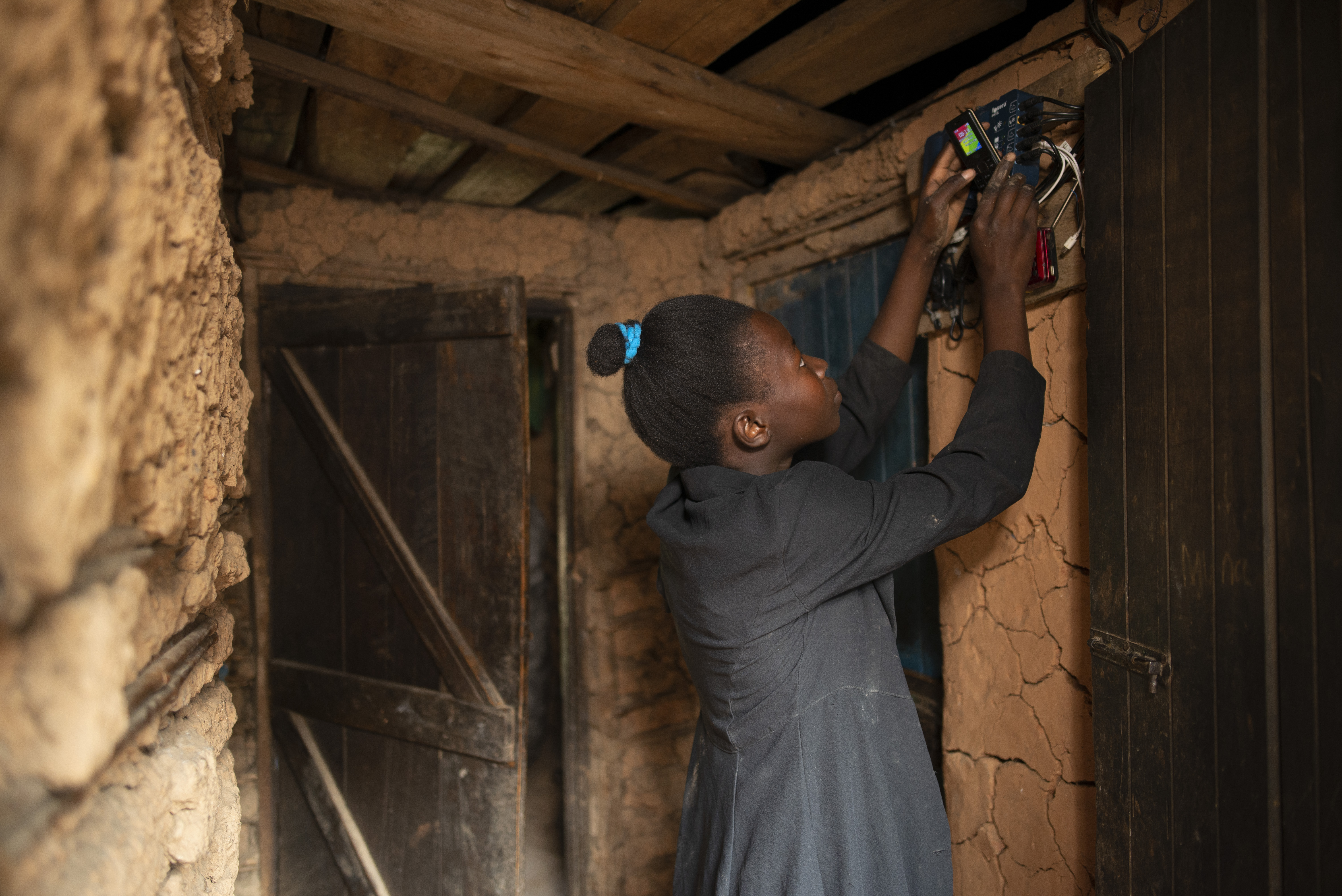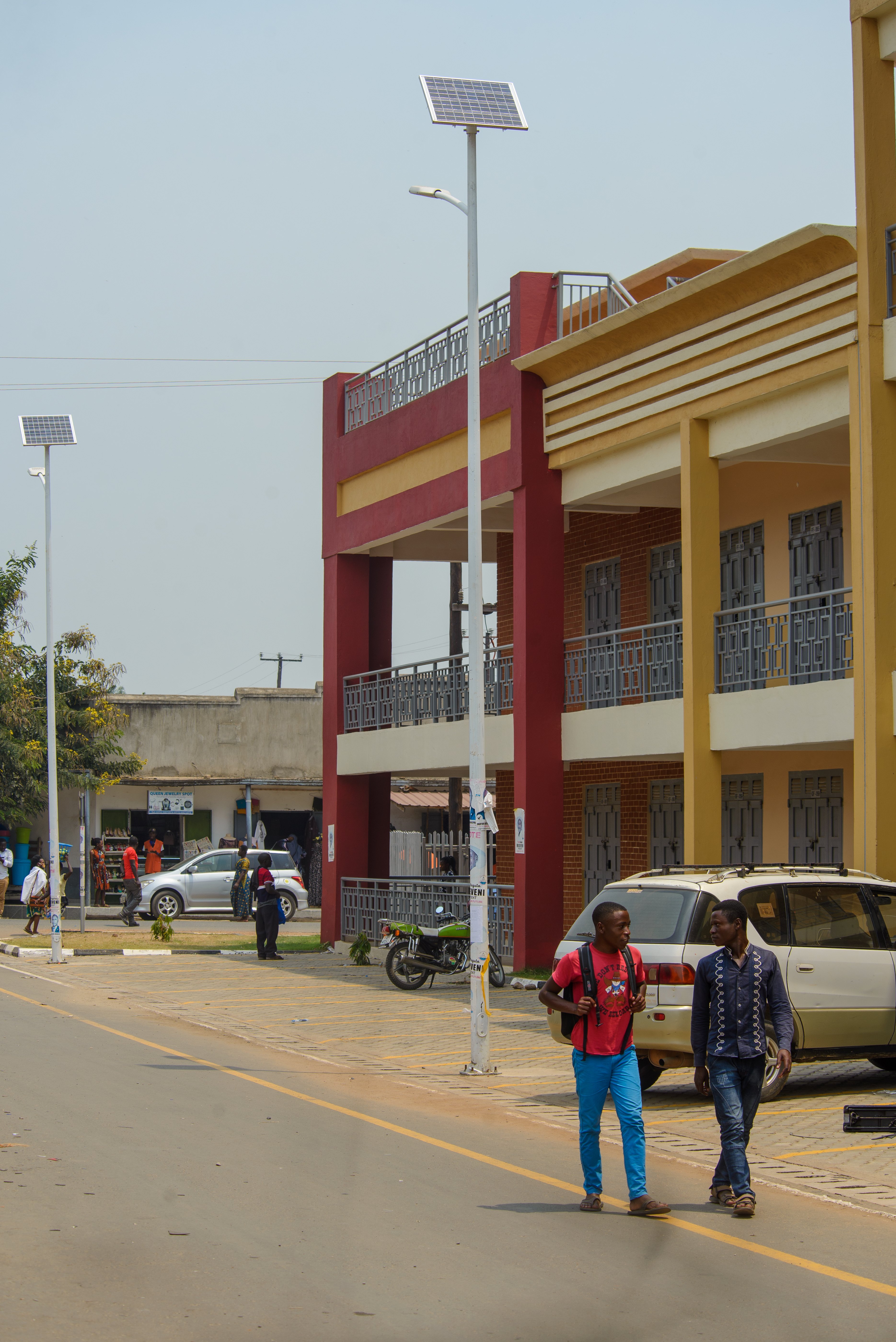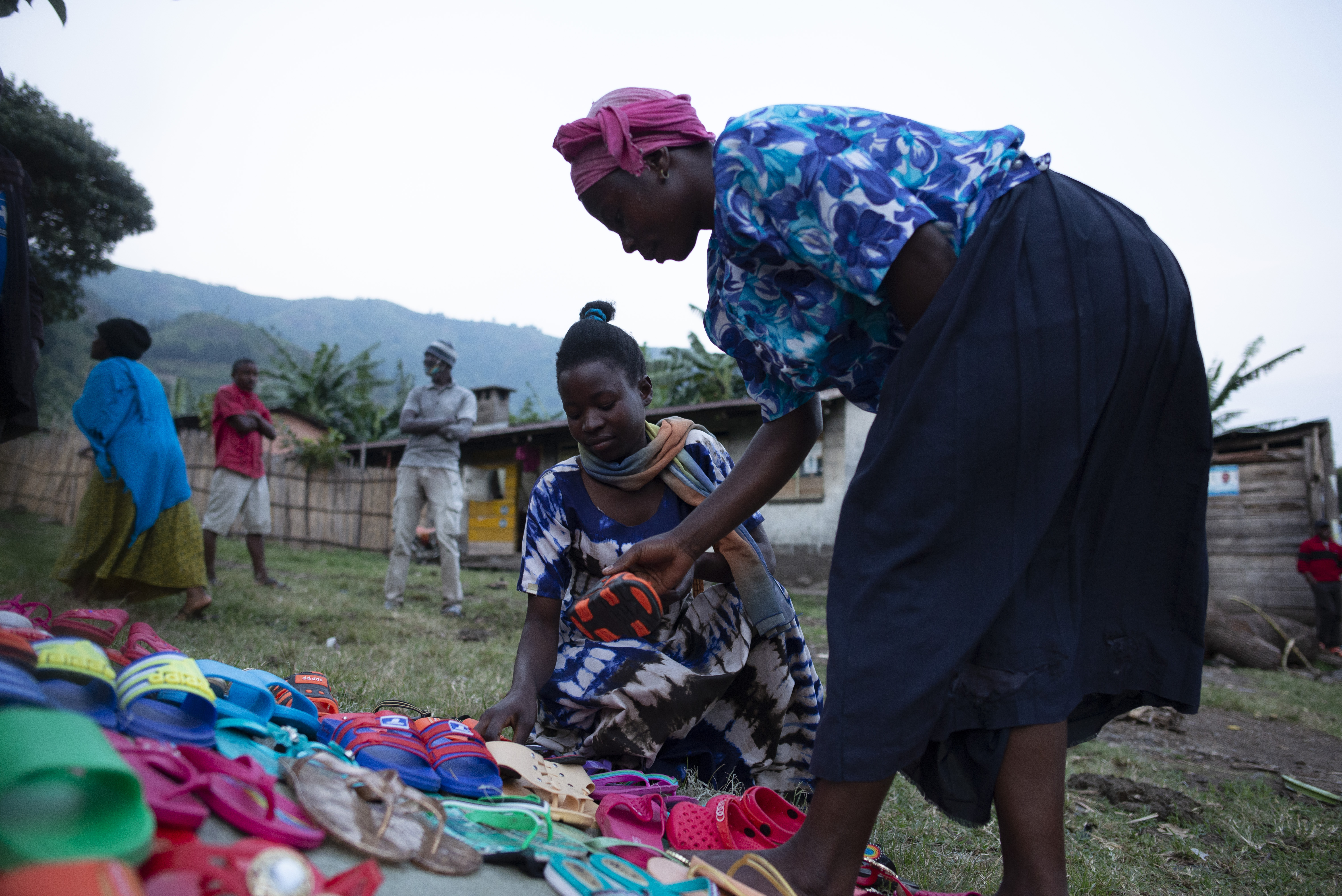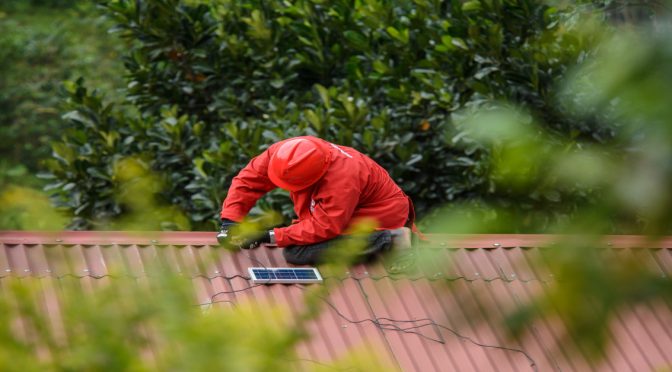Bridget Kabugho’s eyes light up when she talks about her new business venture. As she peels cassava — starchy root vegetable found in many tropical countries — in front of her house in the Ugandan town of Kasese, she speaks passionately about how she started her own business selling footwear in the village market square thanks to the availability of low-cost, reliable solar energy.
All this was unimaginable for Bridget a few years ago. “We are able to save money by replacing akatadooba with solar power, so I can start my small business,” she says. Akatadooba is the local word for paraffin lamps commonly used by Ugandans as source of light after dark. “With the new income, I can also afford to buy new clothes and food for my children,” she says.
Bridget can now bring more income to her family with the help of her father-in-law Augustine Mbuyinahe who installed rooftop solar photovoltaics (PV) on her house. She no longer has to spend 2,000 shillings (or USD 0.5) on paraffin every week for the smoke-emitting akatadooba.

The shift from the polluting paraffin lamps to clean solar power has not only increased Bridget’s earnings, it has also improved the family’s health. Before the solar kit was installed, Bridget’s children risked regular exposure to the harmful effects of indoor air pollution, which according to the World Health Organisation causes close to four million premature deaths per year. Today, many of the town’s residents report improvements in health. “Health centres in Kasese are seeing fewer cases of chest congestion-related diseases,” says the town’s Mayor Godfrey Kabbyyanga.

Like the Mbuyinahe family, most Kasese residents lack access to electricity. Many of the town’s 100,000 population rely on firewood and charcoal for cooking and lighting. To improve access to modern forms of energy, the district government plans to exploit the vast solar potential in Kasese. Despite solar capacity of just 7% in the country, Uganda’s eight hours of sunshine per day represents huge potential for solar power’s development.
Attracting investment is key. As part of efforts to scale up solar PV investment, the government of Uganda introduced model contracts in their investment guides. Additionally, IRENA, the Terrawatt Initiative, and leading international law firms also supported Uganda by drafting simplified and standardised templates for solar PV documents that are publicly available.
Realising the multiple benefits renewable energy could bring, Kasese set an ambitious 100% renewables programme with the aim of bringing access to clean energy services to all local households by 2020. The municipality is also working on a plan to install rooftop solar photovoltaics (PV) on as many buildings as possible including schools and hospitals.
To analyse the potential usage and investment needs of installing rooftop solar PV on different structures in different areas of the city, the Municipality of Kasese received IRENA’s support through the use of SolarCity Simulator, a web-based application that allows users to evaluate the electricity generation and calculate financial needs of rooftop solar PV.
“A solar power system costs around 350,000 shillings (USD 100) which is a big amount for the residents who mostly make a living out of farming. But they have started to understand the long-term benefits of solar energy. With the money they spend to buy paraffin for the lamp, they can pay for the solar kit in instalments within two years,” Kabbyyanga says.

And this is how Augustine Mbuyinahe managed to pay for the rooftop solar power kits for his family. As a coffee farmer, he bought the kits with the facilitation of the coffee farmers cooperative that allows him to pay in instalments. The choice brought instant positive changes to his family. As his daughter-in-law put it, “The solar power has changed our lives for the better. I can afford more things for the children, they can continue studying in the evening with the light from the solar power, and we are free from smoke or risk of fire caused by paraffin spill. I am so thankful for this technology.”
The latest assessment on Africa’s pathway to sustainable, inclusive development rooted in the energy transition, please read IRENA’s report developed with the African Development Bank, Renewable Energy Market Analysis: Africa and its Regions.


